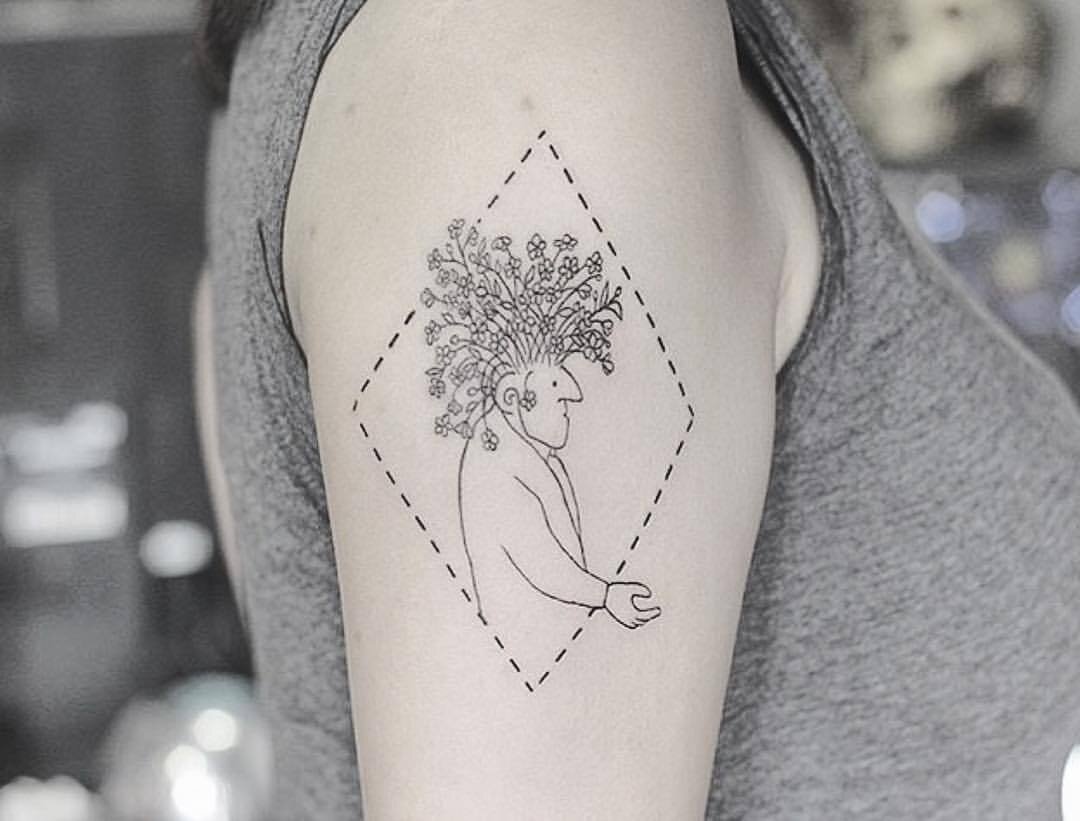Doodling: The Art of Not Taking Your Art So Seriously
There is something magically meditative about being so engrossed in something that you lose track of time.
Google it. People smarter than me agree-
-and you’ll find many articles on it and videos about it.
Depending on your interests and curiosities, there are countless enjoyable ways to lose an entire afternoon in the blink of an eye: a new book or game, a new illustration, painting, doodle, or project you’re working on. . .
You’ll start at noon, blink a few times, and next thing you know the sun is setting and all of a sudden you haven’t eaten or peed all day.
It’s an amazingly special + rare treat nowadays — to lose track of time completely. Your brain gets to switch gears completely — and trust me, it appreciates you letting it off leash.
Of all aforementioned ways, doodling is one of my favorite ways to get lost in the day completely; and in my humble opinion, doodling is the art of not taking your art or your self too seriously.
Photo by Annie Spratt on Unsplash
This page contains affiliate links, which means I may earn a small commission if you use those links. For more info please see my Disclosure here.
You’ve probably seen coloring books out there for grown-ups now that are themed and even geared towards helping relieve stress-busters. Coloring books are definitely a great way to doodle if you want to play with lots of color +/or you don’t want to worry about the design part. I was given a beautifully illustrated Meditation coloring book full of mandalas and geometric designs. I love it and other coloring books when I really need to decompress and I don’t want to think too much about anything at all.
But on days where I am feeling a bit more creative, I just want to go off on my own and make all those designs myself. So I doodle. And while colors are beautiful, I have always always loved and appreciated the simple beauty of black and white. So most often, it’s simply that. A white paper and black ink pens.
I’ve grown up drawing and doodling. Not very well - but that’s not the point. I think lots of people thought to themselves as a kid in art class that they weren’t very good at drawing, painting, insert-creative-hobby-here, etc. — so they totally abandoned it. Which is a big time sad-trombone sound effect and the opposite of art’s intention!
Doodling is about letting go of that inhibition and doodling for the sake of doodling. For yourself and for the fun of it. I think it’s something in the word itself. It’s not meant to be taken so seriously. Do all of my doodles end up turning out like I want them to? No. But that’s not the point. Doodling for me is a catharsis. A way to decompress and unwind after a long day or when my brain feels too noisy and I want to quiet things down. The point is that I’m sitting down and allowing myself the opportunity to create without any expectation.
There’s lots of different illustration styles that appealed to me growing up. . .
As a kid I loved Shel Silverstein’s books. His illustrations were just as wonderful as his poetry. I still love flipping through the pages of “Where The Sidewalk Ends”. The illustration below is one of my very favorites by him. While there’s no written poem with it — it hardly needs one.
I will always love the sweet simplicity of shel silverstein’s line work + illustration style.
line work + dot work tattoo inspiration:
I don’t have a single tattoo myself — simply because I could never pick one idea I loved enough to commit to. But I love, love, love, the simplicity and design style of simple line work. No colors. Little to no shading (or shading only done with dots/lines). Simple simple simple. Because I had seen the style used a lot in tattoos, I turned there for inspiration when I got my first sketchbook and started doodling.
I spent time looking at dot work and line work. I’d look at different design styles, study them, and practice them. When they didn’t turn out half bad, I was immensely pleased with myself. I even harkened back to my Shel Silverstein books and studied those, too.
Here are some beautiful line work + dot work tattoos that inspired me to get started doodling:
(We’ll start with my favorite Shel Silverstein illustration.)
Like I said - I feel like the majority of people profess themselves to be bad drawers, illustrators, or artists if they’re asked— which if you think about it, is purely relative. And I get it! . . . It’s easy to feel like you’re no good when there are so many great artists and illustrators out there.
But how many people profess themselves to be “bad doodlers”?? I’d imagine the answer to be far fewer.
“Doodling” just sounds more innocent and approachable. . . Which is why it’s the only term I use when I sit down to create something on a blank piece of paper nowadays.
While it’s easy for me to lose track of time when I’m creating, I’ve always had a hard time calling myself an “artist”. The word itself makes me feel like my work has to be good. I prefer to think of myself as more of a maker + creator, because then I’m not obligated for it to turn out well - which takes all the pressure off.
I treated myself to a set of different sized black micron ink pens and a sketchbook and challenged myself to doodle. When first getting started - and still now - I try to sit down without any expectation, approaching each blank page one line and one dot at a time.
My hand went most often to drawing plants and flowers. Nothing fancy, specific, or biologically accurate - just flowers from my mind. I’d draw and layer and move from one to the next. Line by line. Dot by dot.
Doodling is an easy activity for me to get lost in. Meditative and full of mindfulness, in a way. Thinking about how all my leaves, petals, and blossoms need to overlap and layer the way I want them to requires my full presence.
some (not necessarily good) doodles from yours truly:
A photo of some old mini doodles I did years back on index cards. All my doodles are ©fireflyandfinch and may not be copied or used without my express permission.
All my doodles are ©fireflyandfinch and may not be copied or used without my express permission.
All my doodles are ©fireflyandfinch and may not be copied or used without my express permission.
All my doodles are ©fireflyandfinch and may not be copied or used without my express permission.
They’re rough, squiggly, more imperfect than anything else. . . and I love them. I call them Floodles. Flora doodles. Makes sense, right? Floodles.
All my doodles are ©fireflyandfinch and may not be copied or used without my express permission.
All my doodles are ©fireflyandfinch and may not be copied or used without my express permission.
The doodles above and below have been a fun deviation from my “Floodles.” I usually start out with a squiggle somewhere on the paper, then build and move from there. I’m so accustomed to working with all black and white, though, I’m kind of unsure about the colors I added into the piece below. They stand out to me, and not necessarily in a good way. . . I may go back in with some watercolor to change the colors or just to add some fluidity.
Sometimes if I’m getting stumped or having “maker’s-block” with a doodle, I move on to another one. I’ll go back to an old doodle and spend fifteen minutes on it. Or I’ll open up to a blank page and start a new piece. I don’t like to spend a lot of time on the old/new doodle. . . I find that even fifteen or twenty minutes really helps pull my mind out of the piece that was giving me trouble!
All my doodles are ©fireflyandfinch and may not be copied or used without my express permission.
All my doodles are ©fireflyandfinch and may not be saved, copied, or used without my express permission.
They’re truly just doodles made up of lines and squiggles. I like to think of them as not much more than that because like I said - it keeps the pressure off.
Remember how I said at the beginning that lots of people smarter than me have done studies on how doodling is actually good for you? It’s true.
Studies show letting your brain vent off steam in the form of doodling increases your focus, memory retention, and productivity. Watch the videos below to hear more about it:
If you haven’t doodled in awhile (for some of you that might be twenty+ years) I challenge you to get a sheet of paper and a pen that you like - and just see what leaks out of your brain.
No expectation or goal in mind. If it helps, set the timer for ten or eleven minutes so you don’t feel the pressure of an infinite doodling timeline, but just enough pressure that you don’t sit there staring at a blank page for too long. The timer helps me start moving without overthinking. It doesn’t have to perfect. I just have to start.
Try and think of it as nothing but lines and dots.
Let go. And see what happens when you let your brain, hand, pen + ink flow without a thought.
If you’re lucky — very luck — perhaps you’ll lose track of time completely.































